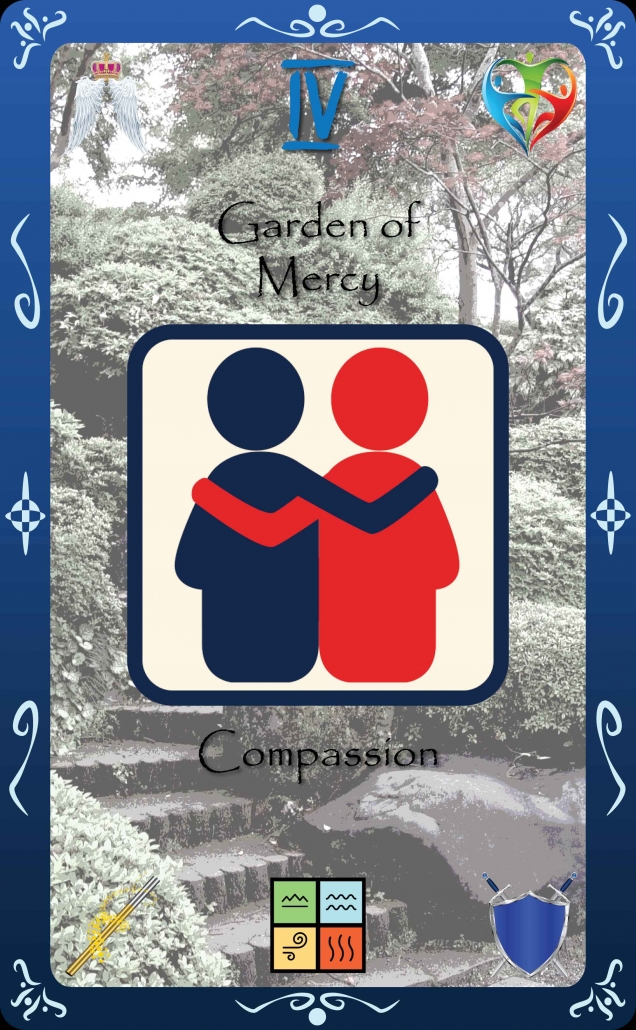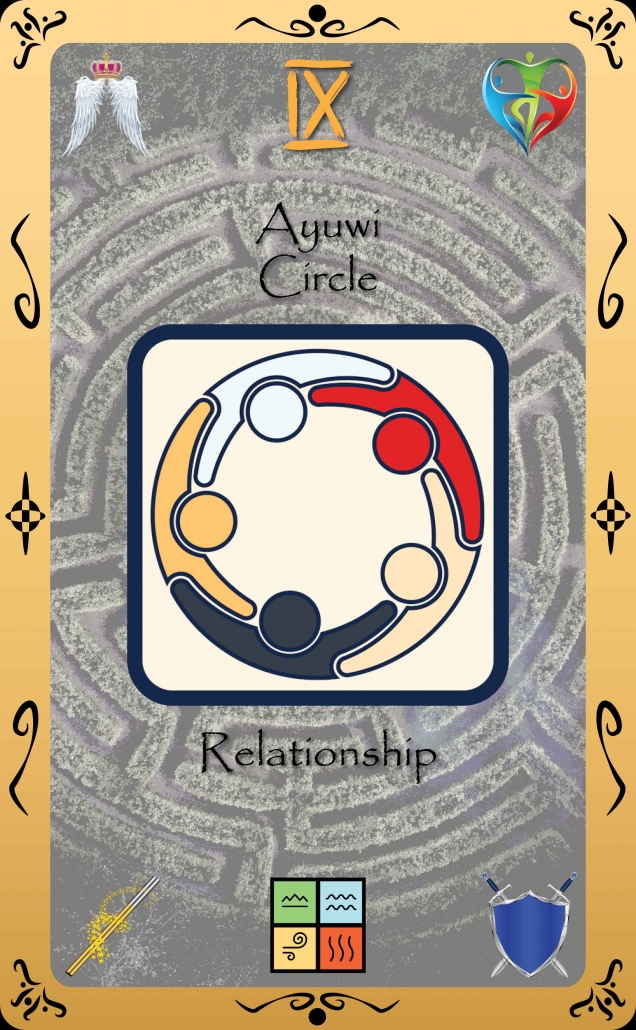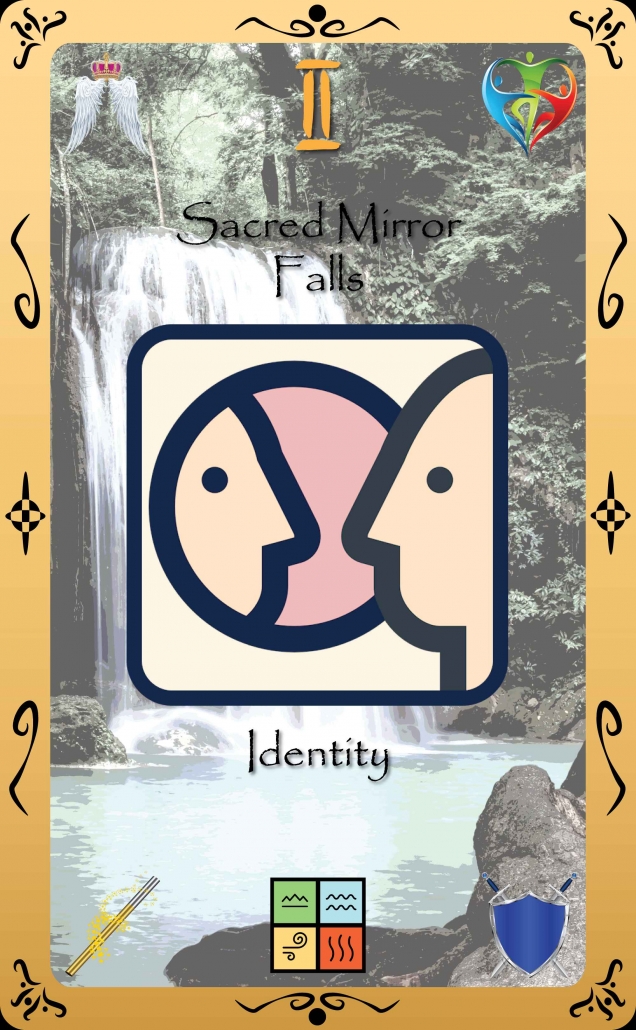The Investor Type
Strategic Lifestyle…
Discover the process of achieving ultimate time and money freedom…
Click the cards below to see what each Phase of the Investor Lifestyle entails. You’ll see where you are on this journey and how to get from here to there. Watch for follow-up emails with even more information to guide you…
Phase 1: Easy Do-It-For-You…
Turning Money Into More Time for You


Garden of Mercy
Compassion
Overview
It is pretty obvious that there is a lot of suffering in the world around us. And only the coldest of people would fail to feel empathy for this suffering, or to desire to find a way—no matter how small—to relieve it, or better yet, to eradicate it altogether. This internal drive to soothe or eliminate obvious suffering is what most of us recognize as Compassion, the key skill taught in Garden of Mercy. Compassion is a powerful force that, according to the Dalai Lama, is actually a primary pathway to happiness.
Ironically, while most of us have no difficulty experiencing or expressing compassion for others, all too often we have difficulty cultivating any level of compassion for ourselves and our own suffering. This is the main focus of the teaching of Garden of Mercy.
Situation
You will soon encounter circumstances involving a loved one that will challenge your natural ability to maintain your compassionate center. The loved one in question will be embroiled in circumstances of his/her own creation, resulting from some ill-considered or unconscious choices. If you allow yourself to go into reaction mode, you will find yourself berating your loved one, and making matters worse as a result of your own upset. You may also find yourself resorting to blaming or shaming statements, and telling your loved one things like “I told you so” or “You should have known better”.
Recommendation
Sometimes our loved ones do things that get them into trouble. This can be particularly difficult if the loved ones in question are children, in which case your role as a caring parent comes into play and you feel compelled to step in and help out—especially if your child is experiencing a lot of pain or suffering as a result of his/her choice. If the loved one happens to be an adult child, then things get complicated, because now you have to balance your desire to relieve suffering with the child’s need to experience the full impact of his/her choice. Of course, if the loved one in question is not one of your children, then your response will vary accordingly.
When a loved one gets into a challenging situation of his/her own creation, and it has a direct (negative) impact on you personally, you may find it difficult to remain grounded and compassionate. One of the first things you can do in this case to help remain grounded is to remember that, at one time or another in your life, you may have made a similar choice—a choice that caused problems for a lot of people you cared about. In other words, take a moment to walk a mile in the other person’s shoes.
Remember your own situation, and the pain and suffering you caused as a result of your choice. Remember how that felt. You probably experienced some guilt or shame about it, and you probably deeply regretted what you had done, but in the face of the impact you created, people around you may not have wanted to hear about that; perhaps their reaction was less than compassionate, and it may have seemed as if they wanted you to suffer even more.
Now consider your loved one. As a result of his/her choice, s/he may be going through a very similar experience as you did, so you can empathize with this person, and you can approach him/her from a place of loving compassion. You can commiserate; you can share a little about your own experience; you can listen to understand more about the choice that was made. And when that is all done, you can help the other person find ways to make reparations.
Remember, we are all here on this physical plane to express and experience the truth of who we really are. In doing that, we sometimes make choices that cause pain for others. Whenever that happens, we must remember to treat ourselves with compassion and to forgive ourselves whenever necessary. And we must be willing to take responsibility for our choices, and make amends if appropriate.

For more information about this topic, please see the full program at Life Mastery Way (and remember the name of your card).
Phase 2: Easy Do-It-Yourself
Spending Little Time While Making Lots More Money…


Ayuwi Circle
Relationship
Overview
Imagine a world in which you are completely alone. No other people. No animals or plants. No other life of any kind. And no inanimate objects of any kind, either. Sounds pretty desolate, to be sure. And yet, if you think about it for a moment, you might ask yourself this question: in the absence of all these things, how would you know who YOU really are?
It is a perplexing question, one well worth considering, for it brings us all face-to-face with a head-slapping realization: that we need all those other things (people, animals, inanimate objects, and so on) in our lives so that we can relate to them. And by relating to all those entities, we get to experience ourselves for who we really are.
That is what Ayuwi Circle teaches us: that Relationship is the single most powerful tool available to us in the physical realm for fully expressing and experiencing who we really are. In other words, relationships—all relationships—are sacred!
Situation
You are struggling in your relationship with someone close to you. The two of you are having difficulty communicating, and some of your interactions have been devolving into confrontation, argument, or unpleasant finger-pointing. This is causing you a lot of personal discomfort and upset, and you are not sure what to do about it. Perhaps you are even entertaining thoughts of terminating the relationship altogether.
Recommendation
The first thing you must do is decide how important this relationship is to you; the more important it is, the greater your desire to find a path to mutual healing. One way to gauge the degree of importance it so notice how upset you are about the situation; the more pain you are feeling, the greater the likelihood that you value this relationship a lot.
Answer the following questions to help guide your next steps:
- How important is this relationship to me?
- What is it about the current circumstances that has me most upset?
- How have I contributed to the current situation?
- Am I trying to make myself right in this situation? Am I trying to make <other person> wrong in the process?
- Have I been trying to get <other person> to change who he/she is? Am I willing to live with the possibility that s/he might never change?
- What actions can I take now to create a space for healing to occur?
You might not like some of the answers you come up with, but at least you will have raised your Awareness about your own part in the situation. If you do value the relationship and wish to create healing with the other person, then you can set the following intention for yourself, and maybe even communicate it to your relationship partner:
I really value this relationship and I want to empower both of us to be fully active participants in it. I want to create space for both of us to be heard, no matter what might be going on for us. For my part, I commit to speaking my own truth without in any way holding you responsible for what I might be experiencing. I also commit to listening to your truth from my heart, without condition or judgment.
If you approach your relationship partner with this kind of intention, you will quickly begin the process of mutual healing.

For more information about this topic, please see the full program at Life Mastery Way (and remember the name of your card).
Phase 3: Passive Income All Day Long
Multiple Passive Income Streams and Money Freedom…


Sacred Mirror Falls
Identity
Overview
People everywhere experience societal pressure to conform to what others expect of them. We are drilled from a very early age to be nice, to fit in, to put others’ needs ahead of our own, and so on. We are told not to rock the boat, not to make waves. And if by chance we fail to abide by all these rules, then we run the risk of losing someone’s disapproval, or maybe being shunned, or even worse.
Unfortunately, in order to meet the demands of these rules and regulations, we often end up disowning ourselves. We put on masks and costumes in order to appear publicly the way we believe others want to see us. In doing so, our true selves get lost, and we often end up feeling unhappy, disillusioned, depressed or angry.
In Sacred Mirror Falls, you are taken into a deep exploration of Identity—that is, the essence and meaning of who you really are—and how you can maintain your sovereignty and uniqueness while still honoring the protocols that society puts in place.
Situation
You are showing up in your life in ways that you believe other people want to experience you. This could manifest in a variety of ways:
- You may be putting aside your own wants and needs in order to accommodate the wants and needs of others.
- You may be saying (or doing) things in order to avoid confrontation or conflict, rather than speaking your genuine truth.
- You may be resorting to humor, perhaps even to excess, in order to get people to like you or approve of you.
- You may be adopting a perfectionist approach to your life out of some unconscious belief that it is not okay to make mistakes.
These strategies, and others like them, may actually work to some extent in getting the kind of approval or acknowledgment you are seeking. But they also have a negative impact on your self-worth, because deep down inside you know you are not being your authentic self, and one thing you want more than counterfeit approval or acknowledgment is to be seen and experienced for who you really are.
Recommendation
At the moment, you are being driven by unconscious beliefs about how life operates, so it is important to shed light on these beliefs so that you can understand and accept them for what they are. This will require some deep and tender introspection. You can begin by asking yourself questions like the following:
- What are my beliefs about how I’m supposed to show up in the world?
- What are my beliefs about how the world responds to me?
- How did I come to believe that I am obligated to please others or put my needs aside for them?
- What might happen if I spoke my truth in all situations, rather than trying to avoid conflict all the time?
- What would I lose if I stopped being the “joker” or “class clown“?
Bring compassion and forgiveness to yourself as you ask these questions. Try not to judge yourself in any way; simply observe your answers and notice how you feel about them.
In your soul, you know that it is possible to accommodate people’s wants and needs without compromising your own. It is possible to bring authentic humor into situations when it is called for. It is possible to speak your truth in virtually all situations while still honoring the truth of others. It is possible to aim for perfection while allowing mistakes to guide you.
You also know it is possible for YOU to show up vulnerably and authentically as the shining light you are—while still allowing space for other’s lights to shine just as brightly. So, the real questions you can ask to get you back onto your true path are questions like these:
- How can I show up in authentically in the world while honoring the authenticity of others?
- How can I honor the wants and needs of others without compromising my own?
- How can I speak my truth consistently and reduce the likelihood of conflict?
- How can I allow the gentle flow of my natural humor in a way that contributes to every situation?
You will notice that all these questions begin with How can I… When you ask questions in this powerful way, you are inviting the Universe to feed authentic answers to you through your Soul. So, when you ask them, make sure you maintain your awareness so that you’ll be ready when the answers appear.

For more information about this topic, please see the full program at Life Mastery Way (and remember the name of your card).
